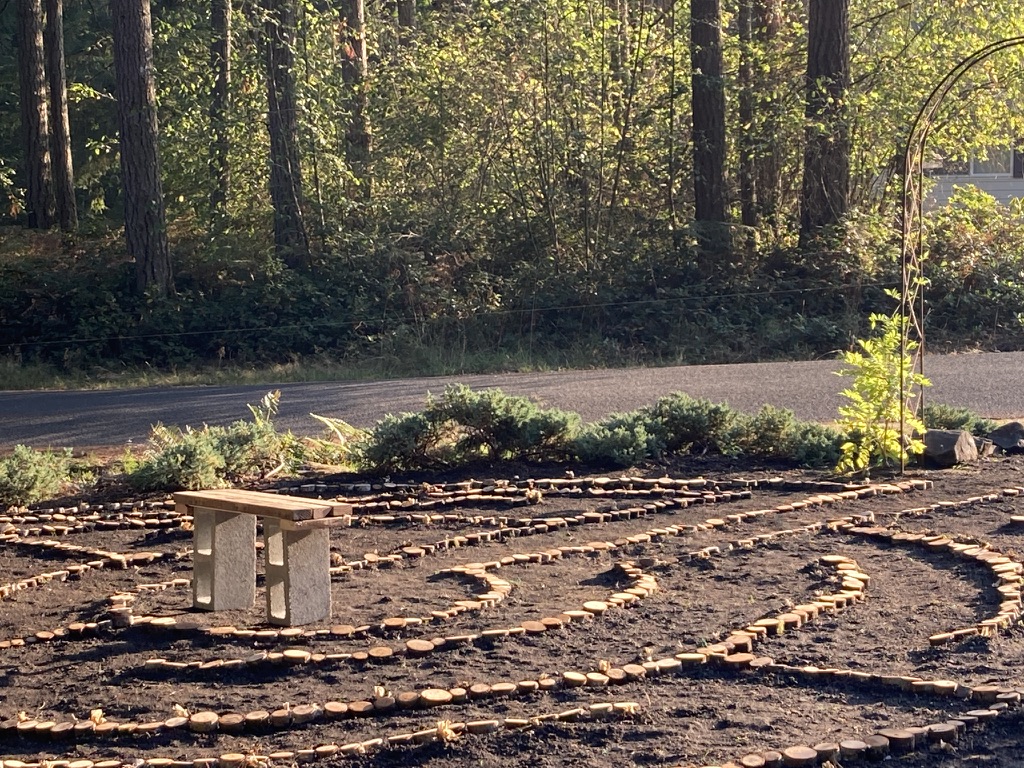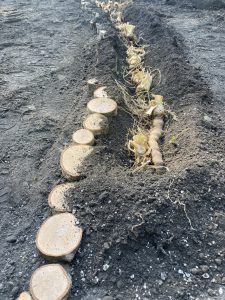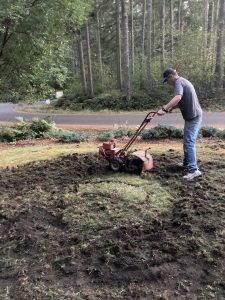
An Act of Hope
The final days of the 2022 World Mission Offering and October are quickly approaching. As a friend and partner in ministry with me and International Ministries, I wanted to say thank you for your faithful giving, prayers and support. Fall has definitely fallen here in the Northwest corner of the US. The leaves have been morphing into colorful crimson, gold and orange harbingers of change. The crisp air and rainy days mark the transition of the seasons. This is the time of the year when gardeners practice acts of hope. Planting bulbs in Autumn is an act of hope for Spring. With no visible sign of life, these brownish blobs, once planted, will anchor themselves into the ground by growing strong, deep roots to get nutrients and water from the soil. During the long cold winter months the bulbs are half-asleep. In this dormant period the bulbs do not grow in size or produce leaves above the ground, but they still quietly work away at growing an ever larger and deeper root system. When it starts freezing above ground, the soil itself protects them from any kind of frost damage, while the cold temperature in the ground below brings on chemical changes that prepare the bulbs for the growing season ahead.

The main reason the bulbs fall asleep is that temperatures outside are dropping. But scientists have found that this ‘sleepy’ period is not only triggered by the weather getting colder, but also by the days getting shorter and shorter. Once the bulb’s dormant period has started, a little ‘stopwatch’ inside the bulb starts counting. When the bulb has
recorded a set number of ‘chilling’ hours, hormonal changes will happen, which help make it ready to start growing. What exactly happens to the bulb underground, to transform it from an onion-like thing with roots into a stunning flower? Much like with delicious pastry, carbs and sugar are key. The hormonal changes, together with the lengthening days and rising temperatures kickstart a process that turns the carbohydrates that were stored in the bulb into sugar. The sugar in turn causes the leaves and the flower to gradually push their way out of the bulb, upwards through the soil, all the way to a beautiful spring day where they will be welcomed by birdsong and sunshine. In between, there is a lot of waiting. In between, there is little evidence of activity. In between, there are no guarantees. In fact, the bulbs face many threats. From being displaced by burrowing moles to being dug up and eaten by hungry deer or to extreme weather conditions, their survival is tenuous. We plant anyways. It is an act of hope.
We moved into our home last November. Now, almost one year later, we see many changes. Limited travel due to Covid restrictions has provided many opportunities to focus on physical labor closer to home. In between teaching, Zoom calls, a smattering of overseas trips, reading and research, we have nested. Walls have been painted, art pieces hung, fireplace mantles sanded and installed, and backyard garden beds, a greenhouse and woodshed have been constructed from upcycled pallet wood. Gary and I have been nurturing our roots here. Besides transplanted rose plants that we inherited from friends, our front yard needs lots more love. Living in our sanctuary of green, surrounded by large fir trees, is both beautiful and challenging. Constant dropping of fir needles and branches created a “lawn of moss and weeds” in our front yard. The idea of planting a living labyrinth has been niggling me for quite some time. Labyrinths have been used by people of faith for centuries as a contemplative, embodied prayer practice. To learn more you, https://www.eastern.edu/sites/default/files/sites/default/files/student_life/faith_practice/Christian%20Uses%20of%20Labyrinths.pdf Afforded a stretch of nice weather, I decided the time was ripe to get started, to move from idea to action. I asked for bulbs for my September birthday, which I gratefully received. Serendipitously, 10 bags of free iris bulbs appeared alongside the road in our neighborhood. Now, we were committed to planting this season.
 Before we could plant, we needed to prepare the ground. The rototiller we borrowed from a friend was too much of a machine for me to handle safely, so my hunky husband stepped in to uproot the old turf. In between calls, I spent the next couple of days pulling, sifting and disposing of sod and plastic mesh. After two more runs with the rototiller, the ground was clean and soft enough to shape into a garden canvas. I leveled and layed out the labyrinth pattern. Using a chop saw, I cut what seemed like a million wood cookies from small logs, again, inherited from friends, and placed them in six concentric circles to form what would become the living labyrinth. Once the pattern was formed, I followed the lines, planting all of the bulbs alongside the wooden border. The final step was to sow microclover seeds along the path to provide a soft natural carpet, welcoming to both humans and pollinators. And now we wait.
Before we could plant, we needed to prepare the ground. The rototiller we borrowed from a friend was too much of a machine for me to handle safely, so my hunky husband stepped in to uproot the old turf. In between calls, I spent the next couple of days pulling, sifting and disposing of sod and plastic mesh. After two more runs with the rototiller, the ground was clean and soft enough to shape into a garden canvas. I leveled and layed out the labyrinth pattern. Using a chop saw, I cut what seemed like a million wood cookies from small logs, again, inherited from friends, and placed them in six concentric circles to form what would become the living labyrinth. Once the pattern was formed, I followed the lines, planting all of the bulbs alongside the wooden border. The final step was to sow microclover seeds along the path to provide a soft natural carpet, welcoming to both humans and pollinators. And now we wait.
While outside creating this living labyrinth, I had a number of “first conversations” with curious neighbors passing by. Neighbors who had noticed that we moved in a while back, but because of Covid and social considerations, hadn’t made our acquaintance. Questions and comments bubbled up organically, centered around this strange and lovely space that we were curating. I invited them to walk the contemplative path once the clover gets established and strong. I felt both welcoming and welcomed to our neighborhood. It seems as if the art became an opening. An opening to meet, an opportunity to chat, an excuse to move beyond awkward into something more authentic. We have dreamed of offering our home as a place of rest and renewal, breath and beauty, comfort and community for those in need of a safe space and a place to reconnect physically, spiritually and socially. Hopefully someday you can experience a place of pause and prayer here and we can practice radical hospitality with you. Until then, we wait. 
I’ve said often that disruption can be an invitation to creation. The disruption to my travel schedule has shifted the way I practice my global consultant ministry for this season, yet the unseen activity below the schedule, during this dormant time, is producing significant physical, emotional and spiritual changes in me. It is preparing me for the springtime of service that is coming again soon. As Father Richard Rohr often affirms, “We need both action and contemplation to have a whole spiritual journey. It doesn’t matter which comes first; action may lead you to contemplation and contemplation may lead you to action. But finally, they need and feed each other.” An unprecedented and exciting opportunity is in the works for January in Ecuador. I’ll share that news in my next update. Until then, we plant, we water, and we wait. Only God knows what will come, yet we have hope. Thank you for being an act of hope in my life. What acts of hope are happening near you? I’d love to hear about them.
Until then, I’ll wait.
Mylinda